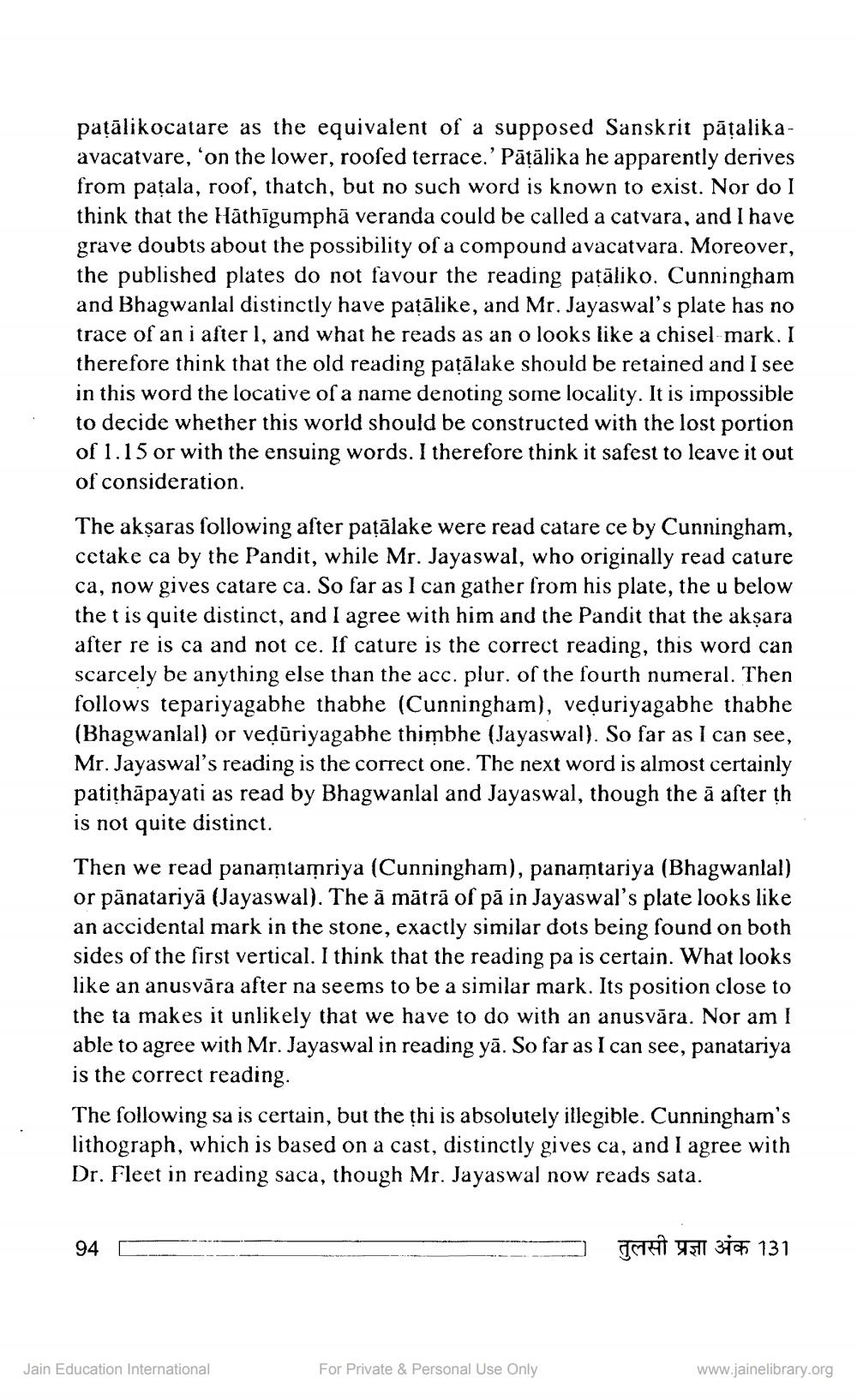________________
patālikocatare as the equivalent of a supposed Sanskrit pāțalikaavacatvare, 'on the lower, roofed terrace.' Pātālika he apparently derives from patala, roof, thatch, but no such word is known to exist. Nor do I think that the Hāthīgumphā veranda could be called a catvara, and I have grave doubts about the possibility of a compound avacatvara. Moreover, the published plates do not favour the reading pațāliko. Cunningham and Bhagwanlal distinctly have patālike, and Mr. Jayaswal's plate has no trace of an i after 1, and what he reads as an o looks like a chisel mark. I therefore think that the old reading pațālake should be retained and I see in this word the locative of a name denoting some locality. It is impossible to decide whether this world should be constructed with the lost portion of 1.15 or with the ensuing words. I therefore think it safest to leave it out of consideration.
The akşaras following after pațālake were read catare ce by Cunningham, cetake ca by the Pandit, while Mr. Jayaswal, who originally read cature ca, now gives catare ca. So far as I can gather from his plate, the u below the t is quite distinct, and I agree with him and the Pandit that the aksara after re is ca and not ce. If cature is the correct reading, this word can scarcely be anything else than the acc. plur. of the fourth numeral. Then follows tepariyagabhe thabhe (Cunningham), veduriyagabhe thabhe (Bhagwanlal) or veďūriyagabhe thimbhe (Jayaswal). So far as I can see, Mr. Jayaswal's reading is the correct one. The next word is almost certainly patithāpayati as read by Bhagwanlal and Jayaswal, though the ā after th is not quite distinct. Then we read panamtamriya (Cunningham), panamtariya (Bhagwanlal) or pănatariyā (Jayaswal). The ā mātrā of pā in Jayaswal's plate looks like an accidental mark in the stone, exactly similar dots being found on both sides of the first vertical. I think that the reading pa is certain. What looks like an anusvāra after na seems to be a similar mark. Its position close to the ta makes it unlikely that we have to do with an anusvāra. Nor am I able to agree with Mr. Jayaswal in reading yā. So far as I can see, panatariya is the correct reading
The following sa is certain, but the thi is absolutely illegible. Cunningham's lithograph, which is based on a cast, distinctly gives ca, and I agree with Dr. Fleet in reading saca, though Mr. Jayaswal now reads sata.
94
L
---
--------
---
T
T
451 310 131
Jain Education International
For Private & Personal Use Only
www.jainelibrary.org




